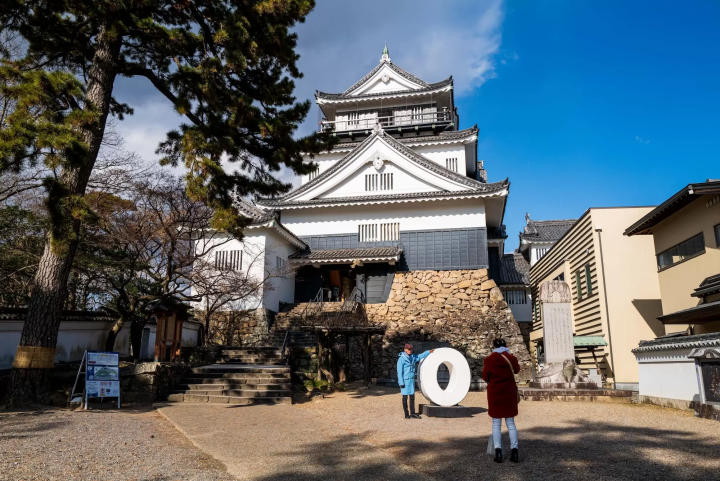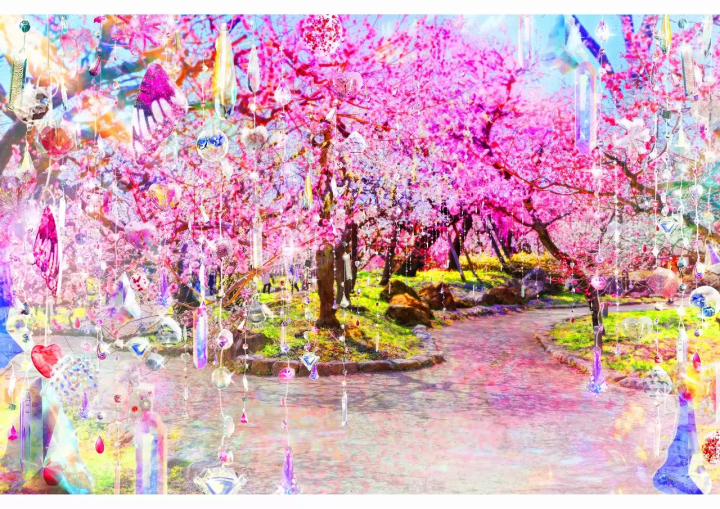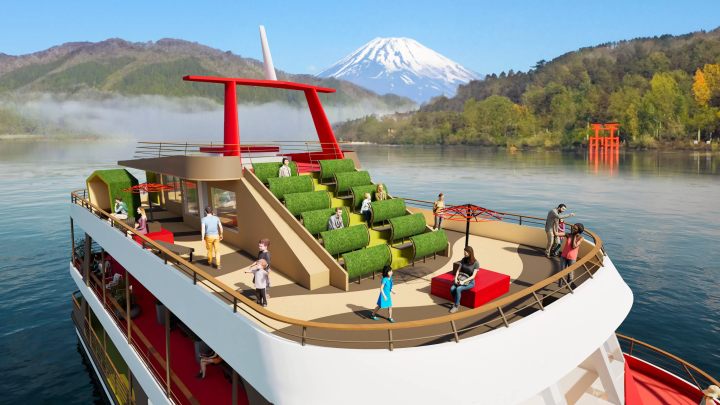Okazaki's Culinary Heritage: The 400-Year Legacy of Hatcho Miso and Its Connection to the Shogunate

Introduction: Okazaki City, located about 40 minutes by train from Nagoya, is the birthplace of Shogun Tokugawa Ieyasu and the hometown of Hatcho Miso. This charming destination allows visitors to experience rich history and culture through traditional miso brewery tours that preserve age-old brewing methods, while also savoring local gourmet food. We suggest a day trip itinerary to fully enjoy the culinary delights of Okazaki amidst its beautiful seasonal landscapes.
-
Table of Contents
- Day Trip to Okazaki
- 1. Get a First Taste of Hatcho Miso for Breakfast
- 2. Dive Deeper Into Hatcho Miso’s Past and Present
- 3. Okazaki Kakukyu Hachomura: Enjoy a Lunch Menu Using Hatcho Miso
- 4. Walk to Okazaki Castle and Okazaki Castle Park
- 6. Afternoon Tea Time at Jonantei
- Conclusion
Day Trip to Okazaki
Nagoya is a well-known city often considered the gateway to the Chubu region. However, Okazaki is situated in the eastern Mikawa region, approximately 40 minutes by train from Nagoya Station and about 70 minutes from Central Japan International Airport, Nagoya (NGO). It provides travelers with the chance to experience the rich history of Japanese samurai culture alongside modern cuisine.Okazaki is a walkable and welcoming city, making it perfect for a day trip focused on its seasonal beauty and local specialty: miso.
At the heart of the city is Okazaki Castle, surrounded by a park that is considered one of the best hanami spots in the country during springtime. The beautifully restored castle is the birthplace of the legendary shogun Tokugawa Ieyasu. His remarkable life inspired the award-winning TV series “Shogun,” which depicts the unification of Japan and the beginning of the Tokugawa period.
Within walking distance of Okazaki Castle Park is the renowned Hatcho district, named for its distance of "eight-cho" (approximately 870 meters) from Okazaki Castle. This district is famous as the birthplace of Hatcho Miso, a uniquely crafted red miso believed to be a favorite of the Tokugawa family.
Two publicly accessible miso breweries, Maruya and Kakukyu, continue to produce Hatcho Miso using traditional methods that have been preserved for nearly 400 years. Both breweries are conveniently located on Hatchokura-dori Street and offer informative tours and tasting courses for visitors.
There are many reasons to visit Okazaki, especially for those who enjoy healthy plant-based meals that shoguns ate during the Edo Period (1603-1868). It’s also perfect for visitors interested in Japanese history and binge-watched the recent “Shogun” drama series.
Here’s an Okazaki day trip itinerary to get you started below!
Getting to Okazaki:
Take the Meitetsu Line from Nagoya Station to Higashi-Okazaki Station. The trip only takes about 30 minutes, making it a great day trip option for those staying or flying into Nagoya.

CAPTION: At Okazaki Castle, where Tokugawa Ieyasu was born, there are enjoyable and interactive exhibits alongside displays of the cultural and traditional industries of this prosperous castle town.

1. Get a First Taste of Hatcho Miso for Breakfast

Firstly, you’ll want to grab breakfast for the day ahead. Head straight for the Hatcho district and seek out Sakura Bakery, conveniently located near Hatchokura-dori Street and Okazaki Castle. This quaint shop serves up some of the most unique bread and pastries in the city.
Their signature bread Komeko Kurumi Miso Pan (rice flour walnut miso bread) has a wonderfully chewy texture and is filled with sweet Maruya Hatcho miso and walnuts. This salty-sweet glutinous bread could almost be mistaken for mochi. It’s the perfect snack for introducing Hatcho miso as a diverse ingredient. Try it with matcha green tea or your morning coffee.

Caption: Komeko Kurumi Miso Pan (rice flour walnut miso bread) has a wonderfully chewy texture and is filled with sweet Maruya Hatcho miso and walnuts.


Another popular item is the Natural Sakura Yeast Bread made with yeast collected from cherry blossom petals from a tree planted during Ieyasu's childhood. Dubbed Ieyasu's Sakura Yeast, Natural Sakura Yeast Bread has a subtle aroma and gentle sweetness. This is from the carefully selected yeast and ingredients that are slowly fermented for about 72 hours before baking. The results are definitely worth the wait!
2. Dive Deeper Into Hatcho Miso’s Past and Present

After being introduced to the taste of Hatcho miso for breakfast, it’s time to learn how this magical ingredient is made and to try the real thing straight from the source. It’s a short walk from Sakura Bakery to two miso breweries that have been producing Hatcho Miso using traditional methods since the early Edo Period (1603-1868): Maruya Hatcho Miso and Kakukyu Hatcho Miso.

*The Old Tokaido: This refers to the road that connected Edo (present-day Tokyo) and Kyoto, which was utilized for the movement of people and goods.
The two factories are located next to one another. This makes it possible to take part in both factory tours to compare the diverse flavors of Hatcho miso in a single morning.

Hatcho Miso is a soy-based miso made solely from soybeans and salt. The name is derived from the fact that two long-established breweries, facing each other across the old Tokaido road, are located in the Hatcho district of Okazaki City. Both have been producing this miso using traditional methods since the early Edo Period (1603-1868).
Furthermore, Hatcho miso is a rare type of miso that has been preserved as a unique food culture in this region.
While miso is typically made using rice or barley koji, Hatcho Miso is made solely from soybeans. This enhances its nutritional value while adding a rich and robust flavor. As a result, the taste differs from that of regular miso, which tends to be sweeter and offers a complex flavor profile with acidity, astringency, and bitterness.
The delicious taste and nutritional value likely supported the activities of samurai during the Sengoku Period (1467-1603).*Sengoku Period: an era also known as “The Warring States Period,” during which regional warriors or the daimyo (feudal lord) fought amongst themselves for control and governance.




Caption: The impressive Kakukyu brewery still maintains the look and feel of another era while updating its facilities with high-tech hand-packing facilities, a historical museum, a fully-stocked gift shop, and a restaurant.

Moreover, these two breweries have been passing down traditional methods that date back to the Edo Period to the present day.
While stainless steel casks have become common in modern times for their convenience, these breweries still utilize massive cedar casks that are about 2 meters in diameter and height. The ingredients for the miso are placed inside these casks. Using traditional methods, the craftsmen stack a total of 3 tons of weight in a conical shape on top. They continue to uphold this age-old technique in their production.
Additionally, this stone piling is balanced so exquisitely that it can withstand significant earthquakes.
It is said that mastering this technique takes over ten years. This is also a very important task since any imbalance in the stone stacking could potentially affect the flavor of the miso.

Visiting Maruya Hatcho Miso and Kakukyu Hatcho Miso will be a wonderful experience where you can sense the history and techniques that have been passed down from the Edo Period to the present day.

The factory tour includes an explanation of the production process of Hatcho Miso, a visit to the miso brewing warehouse, and a miso-tasting experience.
The miso you taste after learning about Hatcho Miso not only allows you to enjoy its authentic flavor but also offers a unique culinary experience to experience the efforts and passions of the people involved.


Caption: Hatcho miso dengaku (konnyaku) is served to guests during the Maruya factory tour. Both breweries are conveniently located on Hatchokura-dori Street and offer informative tours and tasting courses for visitors. Follow your gut, and learn about this culinary building block of washoku (Japanese cuisine) that even the samurai loved.

During the Kakukyu Hatcho Miso brewery tour, you’ll visit a 400-year-old miso warehouse to learn about Hatcho miso production before tasting a bowl of warm miso soup. This soup is made with Hatcho miso and the other with akadashi*. Once your appetite is piqued, you can indulge in hot, chewy konnyaku topped with miso dengaku, a rich Hatcho miso sauce.
*Akadashi miso…. This type of miso is created by combining rice miso and other ingredients with Hatchō miso (soybean miso). The result is a rich, umami flavor with a slight sweetness.

Kakukyu’s Hatcho miso boasts a surprisingly complex flavor, featuring a nutty umami that is complemented by a well-balanced bitterness and a straightforward saltiness. It serves as an excellent base for broths and savory sauces. In contrast, Maruya’s Hatcho miso presents a different flavor profile—it's perhaps nuttier, slightly less salty, and more acidic.
These differences arise from the distinct koji used by each brand and the shapes of the barrels in which they are made.
Visitors are encouraged to try both brands to appreciate their complexity and unique characteristics.


3. Okazaki Kakukyu Hachomura: Enjoy a Lunch Menu Using Hatcho Miso


After your tour of the Kakukyu and/or Maruya Hatcho miso breweries, you’ll likely be hungry for lunch. Fortunately, there’s an excellent dining option available right inside the Kakukyu facilities.


The menu features a variety of healthy Hatcho miso-themed dishes, including the popular Yuba Tempura Miso Stewed Udon—a rich and savory udon noodle dish served with tempura-style yuba (boiled tofu skin)—and the Miso Katsu set meal, which includes a juicy breaded pork cutlet topped with miso, along with sides of shredded cabbage, Hatcho miso soup, and a bowl of rice.
Rest assured, you won’t leave feeling hungry.
4. Walk to Okazaki Castle and Okazaki Castle Park

After a delicious miso-inspired lunch, it’s time to take a stroll around the beautiful park grounds that provide a seasonal backdrop to Okazaki Castle, where shogun Tokugawa Ieyasu was born and enjoyed plenty of miso.


The park features a beautiful seasonal atmosphere throughout the year, but it is particularly stunning in spring when cherry blossoms and wisteria are in bloom. It has been named one of 'Japan's Top 100 Cherry Blossom Spots' by the Japan Cherry Blossom Association.


Other highlights of the park grounds include the Otemon Gate, statues of the great shogun Ieyasu, and the Ieyasu Clock Tower, which features an animatronic doll of Tokugawa Ieyasu performing Noh. However, the true highlight is the beautifully maintained trees, pathways, and the riverside along the Oto River.


If you linger long enough, you may have the chance to see the Great Ieyasu Aoi Bushotai, a performing samurai team wandering the grounds in full suits of armor. It’s a wonderful reminder to visit the Mikawa Warriors and Ieyasu Museum.

This modern and sleek museum features interactive digital exhibitions that appeal to both adults and children. It focuses on the Mikawa samurai who supported Tokugawa Ieyasu from his birth through the unification of Japan, allowing visitors to explore his character. Guests can view authentic armor and swords, and even try on helmets.




Caption: At the Mikawa Warriors and Ieyasu Museum, samurai armor is on display, and there is a moving diorama theater that highlights the history of Tokugawa Ieyasu's struggles toward the unification of Japan.

The second, third, and fourth floors of Okazaki Castle have been transformed into a museum space filled with samurai armor, weapons, and three-dimensional models of the local area from that period.


Climb to the fifth-floor observatory, and you'll be rewarded with a panoramic view of Okazaki and the greater Mikawa region of Aichi Prefecture.
6. Afternoon Tea Time at Jonantei

Located within the castle park grounds, Jonantei is a traditional Japanese tea house that serves delicious matcha and Japanese wagashi (sweets), offered both separately and in moderately priced sets.

The main room inside has limited seating; however, there are private rooms and ample outdoor seating that features charming red benches, allowing for leisurely views of Okazaki Castle and the beautiful foliage that changes with the seasons.

Jonantei is the perfect spot to catch your breath after learning about the battles and conflicts that defined the life of Tokugawa Ieyasu and the era of the samurai. So take a moment to relax, enjoy a sip of matcha, and soak in the tranquility of Okazaki Park.
The teahouse closes at 5 PM, just like the park, so it's time to head back to Higashi Okazaki Station or consider enjoying a nice dinner at one of Okazaki’s fantastic restaurants if the city's charm has convinced you to extend your stay for another day.
Conclusion
We hope you enjoy your journey exploring Okazaki, the birthplace of Shogun Tokugawa Ieyasu and the hometown of Hatcho Miso.
Hatcho Miso, a fundamental seasoning in Japanese cuisine closely associated with the great shogun, is deeply embedded in the food culture of Okazaki. By visiting Okazaki, you can learn about the traditional methods of producing Hatcho Miso and experience its rich flavors. Why not embark on a journey to enjoy a wonderful culinary experience in Okazaki?
Why not take a trip to Okazaki and enjoy some wonderful food experiences?
(access)
・Approx. 40 minutes by train from Nagoya Station ・Approx. 70 minutes by train from Central Japan International Airport, Nagoya (NGO)
Japan’s Fermentation: The Secret Behind UMAMI. Discover the hidden secrets and charms of Japan’s rich fermentation culture! Nagoya, once home to powerful shogun who shaped history, is famous for landmarks like Nagoya Castle and Ghibli Park. But did you know it's also a treasure trove of Japan’s iconic UMAMI-rich food culture? ■What's HAKKO? In Japanese cuisine, fermentation (HAKKO) plays a crucial role in creating flavorful seasonings and world-renowned sake. The mastery of fermentation techniques is key to crafting these delicious essentials. ■What Kind of Place is Nagoya? Located in central Japan, Nagoya serves as a major transportation hub, easily accessible by air and land. Thanks to its rich natural environment and unique climate, the region has cultivated a distinctive fermented food culture over the centuries.The Chita Peninsula, nestled between Ise Bay and Mikawa Bay, is a scenic region that has long been known for its thriving brewing industries, producing sake, vinegar, miso, and tamari soy sauce. Meanwhile, Nishi-Mikawa, the birthplace of Tokugawa Ieyasu, carries on the tradition of making Hatcho miso and the uniquely light-colored Shiro shoyu (white soy sauce)—both essential elements of Japanese cuisine.
The contents on this page may partially contain automatic translation.




































![[Coupon Available] Attention Overseas Winter Sports Fans! Nagano's Sports Depot Has Evolved](https://resources.matcha-jp.com/resize/720x2000/2026/01/05-254819.webp)
![[2 hours from Tokyo ] 10 Quiet and Breathtaking Views of Mount Fuji in Yamanashi Hokuto City , Yamanashi - Part 2](https://resources.matcha-jp.com/resize/720x2000/2025/12/16-253037.webp)